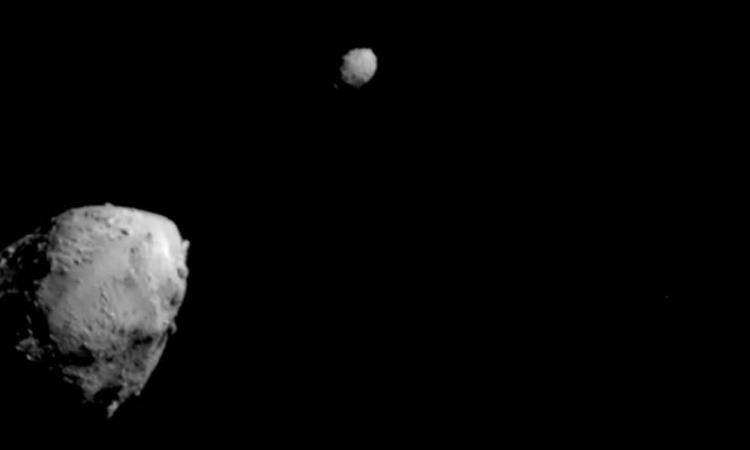Professor John Christian’s optical navigation algorithm will guide a new lunar lander scheduled to arrive on the surface later this week.
Update: Intuitive Machines' uncrewed lunar lander landed on the Moon at 6:23pm ET on February 22, 2024.
Algorithms developed by Georgia Tech researchers will help land a spacecraft on the Moon. The algorithms are part of the Terrain Relative Navigation (TRN) software onboard Intuitive Machines’ Nova-C class lunar lander named Odysseus, which launched on February 15 and is attempting to become the first American spacecraft to softly land on the lunar surface since Apollo 17 in 1972.
Aerospace engineering professor John Christian created the algorithm and helped Intuitive Machines engineers transition the idea from theory to practice. Based on a concept known as visual odometry, Odysseus will use pictures of the terrain to help it safely land on the lunar south pole region on February 22.
Christian’s algorithm is based on more than a decade of research on Optical Navigation (OPNAV), which uses cameras and telescopes to help spacecraft know where they are anywhere in the Solar System.
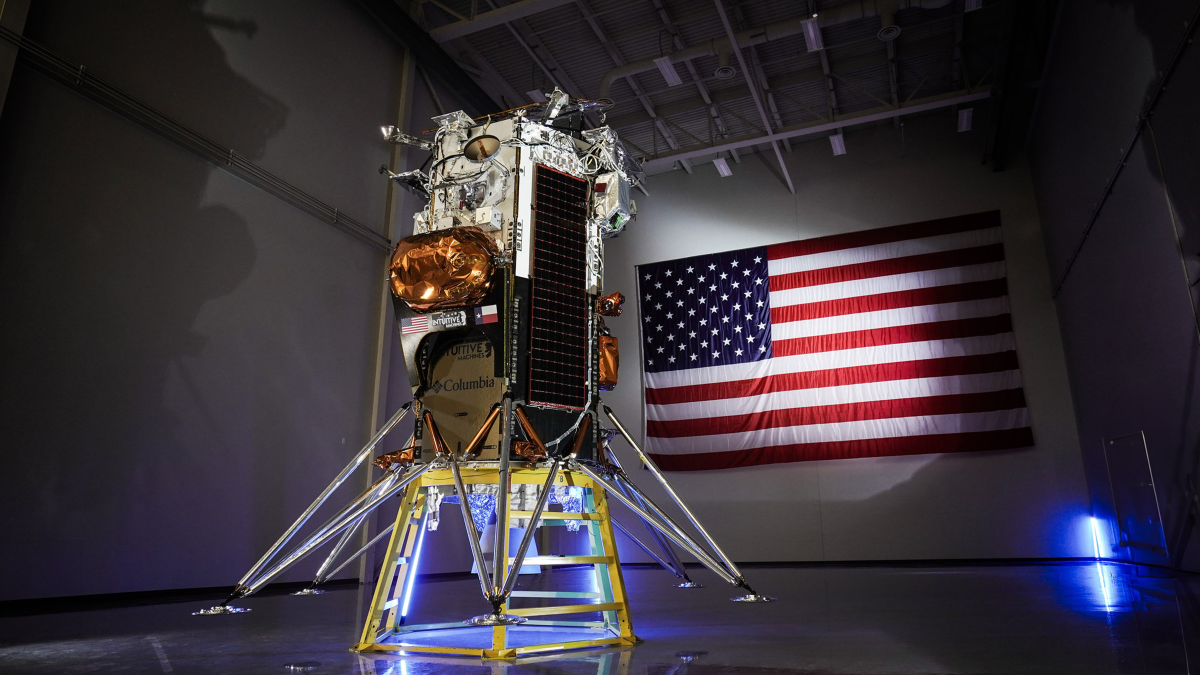
Odysseus stands tall after assembly is complete. The six-legged lander is expected to soft land on the Moon on February 22. Credit: Intuitive Machines.
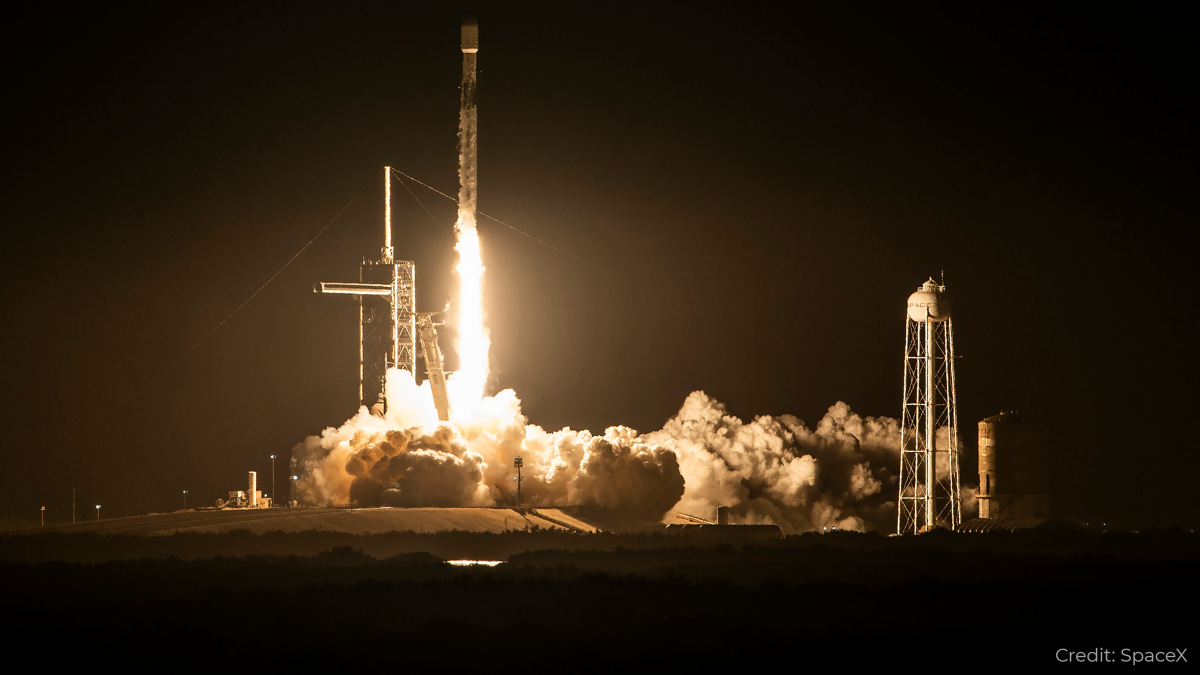
The IM-1 mission launched in the early hours on February 15, 2024 from NASA's Kennedy Space Center onboard a SpaceX Falcon 9 rocket. Credit: SpaceX
Intuitive Machines’ lunar mission (IM-1) successfully launched on February 15 from NASA’s Kennedy Space Center in Florida onboard a SpaceX Falcon 9. The two-stage rocket carried Odysseus and its six NASA payloads and six commercial payloads as part of NASA’s Commercial Lunar Payload Services (CLPS) and Artemis program.
Odysseus successfully separated from the Falcon 9 and is on its way to the Moon approximately 48 minutes after liftoff. Once at the Moon, it will perform a maneuver to begin its descent towards the unexplored Malapert A crater---about 300 km from the lunar south pole. As it approaches the surface, Odysseus will rely on Christian’s algorithm to directly measure its motion relative to the Moon.
(text and background only visible when logged in)
“The method of TRN used on IM-1 is really exciting because it doesn’t require a map. This means we don’t need to spend resources curating a new map every time we want to land somewhere new.”
Prof. John Christian
(text and background only visible when logged in)
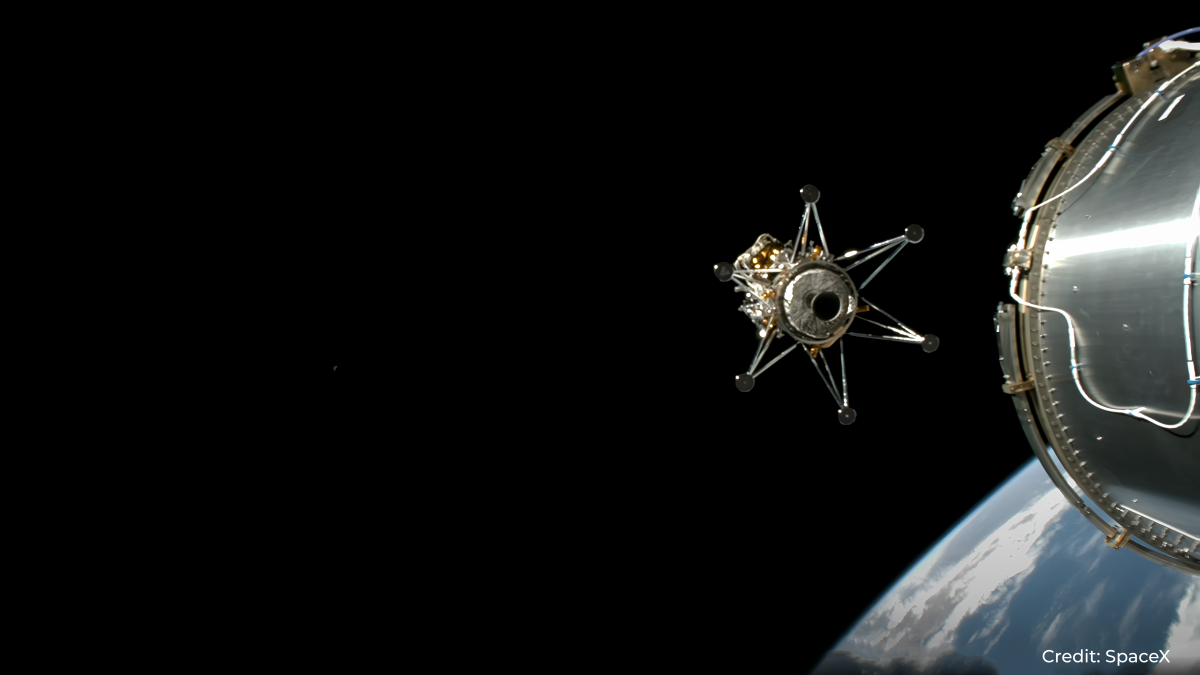
Cameras on board captured several successful images transmitted to Earth. This one shows Odysseus eject during the Falcon 9's second stage. Credit: SpaceX
“The method of TRN used on IM-1 is really exciting because it doesn’t require a map. This means we don’t need to spend resources curating a new map every time we want to land somewhere new,” explained Christian.
In the last two years, Christian’s algorithms have also played an important role in other lunar exploration missions, including NASA’s Artemis I and Lunar Flashlight. Christian and his research team followed a similar approach in each of the missions.
“When designing a new OPNAV algorithm, we usually start by thinking about the environment in which the vehicle needs to navigate. We frame the problem by asking questions like: what kind of camera do we have, what celestial bodies will be viewing (at what distances and lighting), what are the vehicle dynamics, what are the operational constraints, what other sources of information do we have,” he explained.
Answering these questions allows Christian and his students to strip away distractions and develop targeted solutions to real problems. Bridging the divide from theory to practice is one of Christian’s favorite parts of investigating OPNAV at Georgia Tech.
“While OPNAV might seem like a very applied problem, the techniques only work in the real world if the foundational mathematics are squared away first. There were numerous cases where, after initial implementation, we had to go back and work through some very nuanced derivations. Our expertise in the algorithms and comfort with academic rigor allowed us to develop really nice solutions to these problems,” said Christian.
If IM-1 safely and successfully lands on the Moon, it will represent a major step forward in the United States’ efforts to open a new era of lunar research, commerce, and exploration.
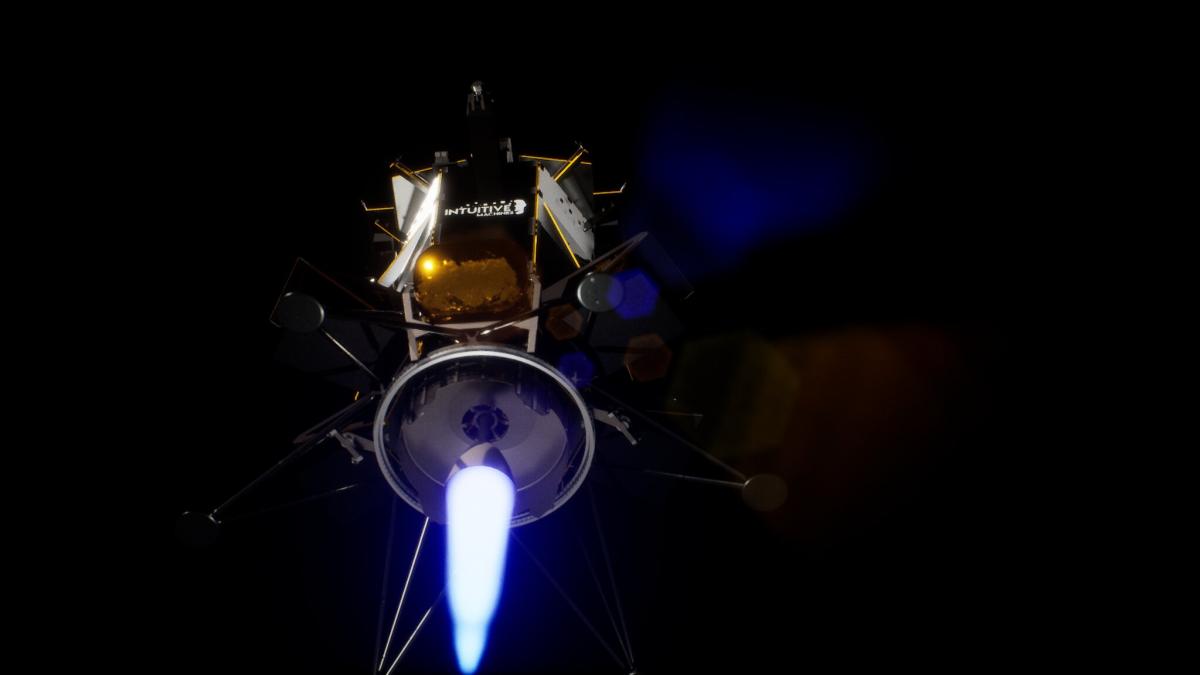
Conceptual imagery of the descent Odysseus will take to position itself to soft land on the lunar surface. Credit: Intuitive Machines
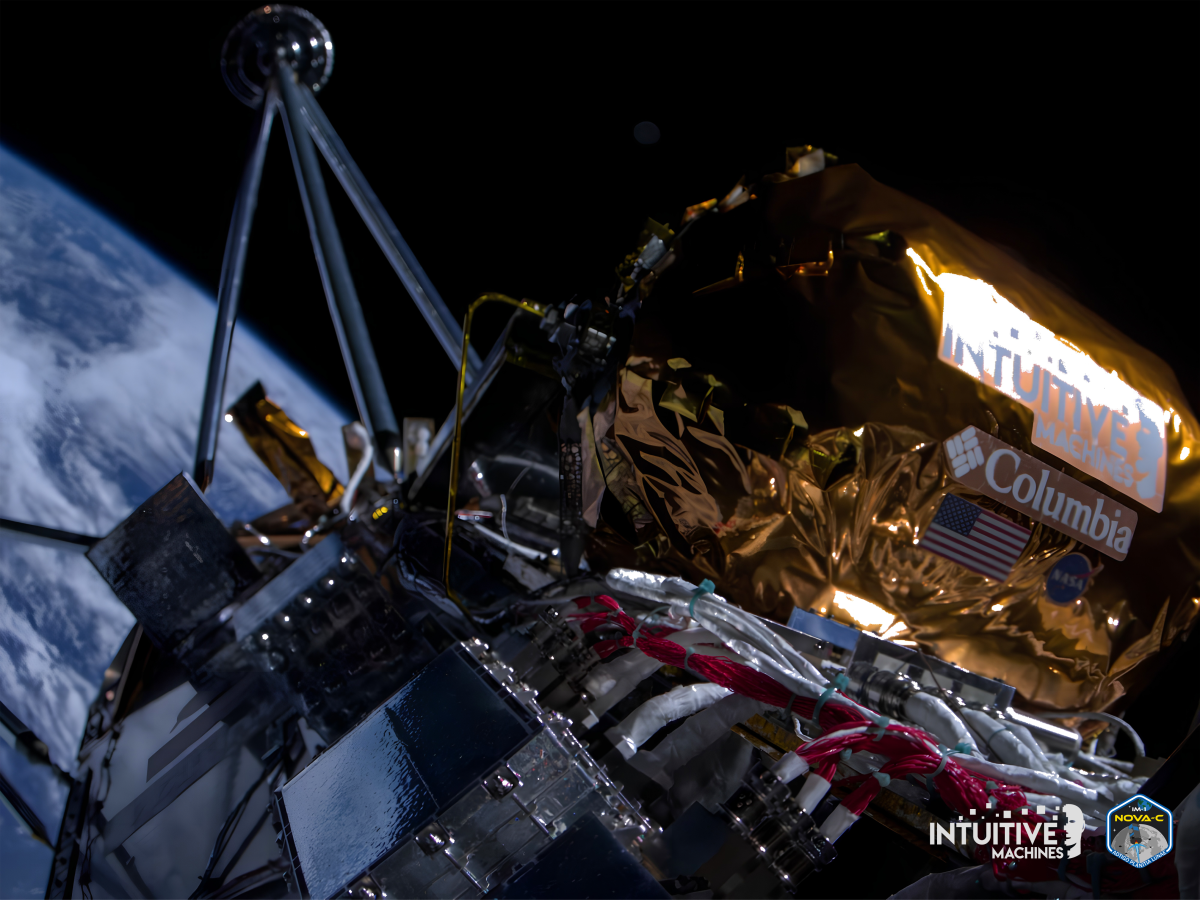
One of the first images to successfully transmit to Earth on February 16, 2024. Columbia is testing its Omni-heat Infinity technology in a new frontier. Credit: Intuitive Machines
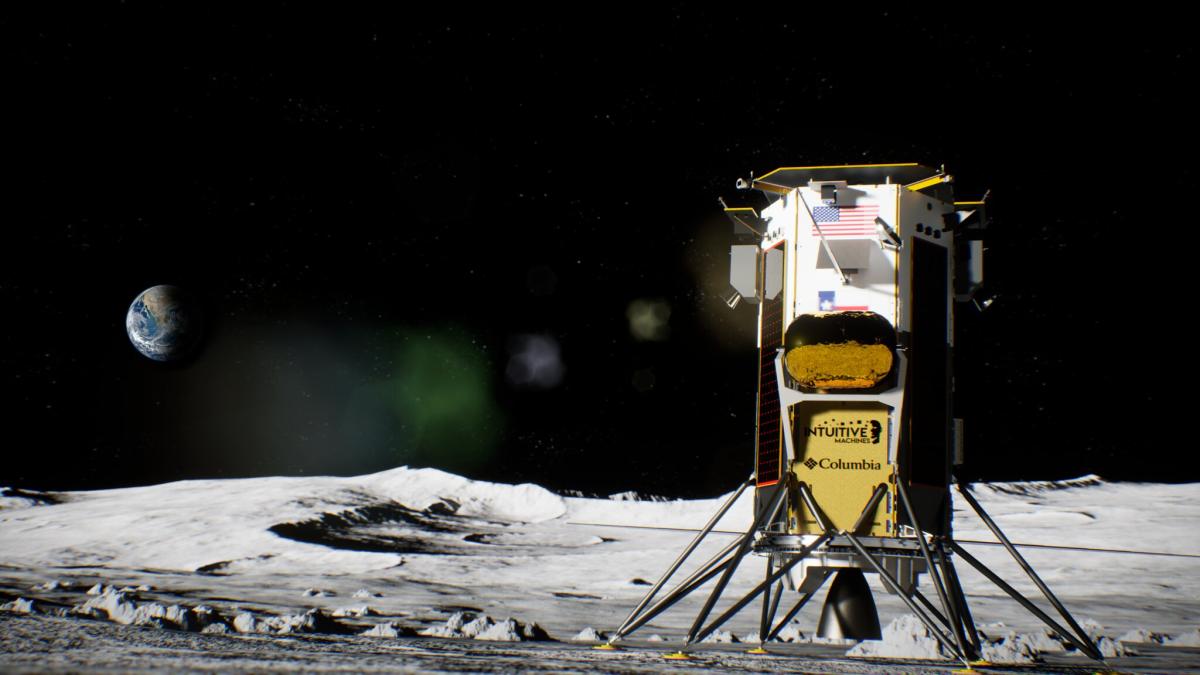
NASA selected Intuitive Machines to deliver five science and technology payloads under Commercial Lunar Payload Services (CLPS) as part of the Artemis program. Conceptual. Credit: Intuitive Machines
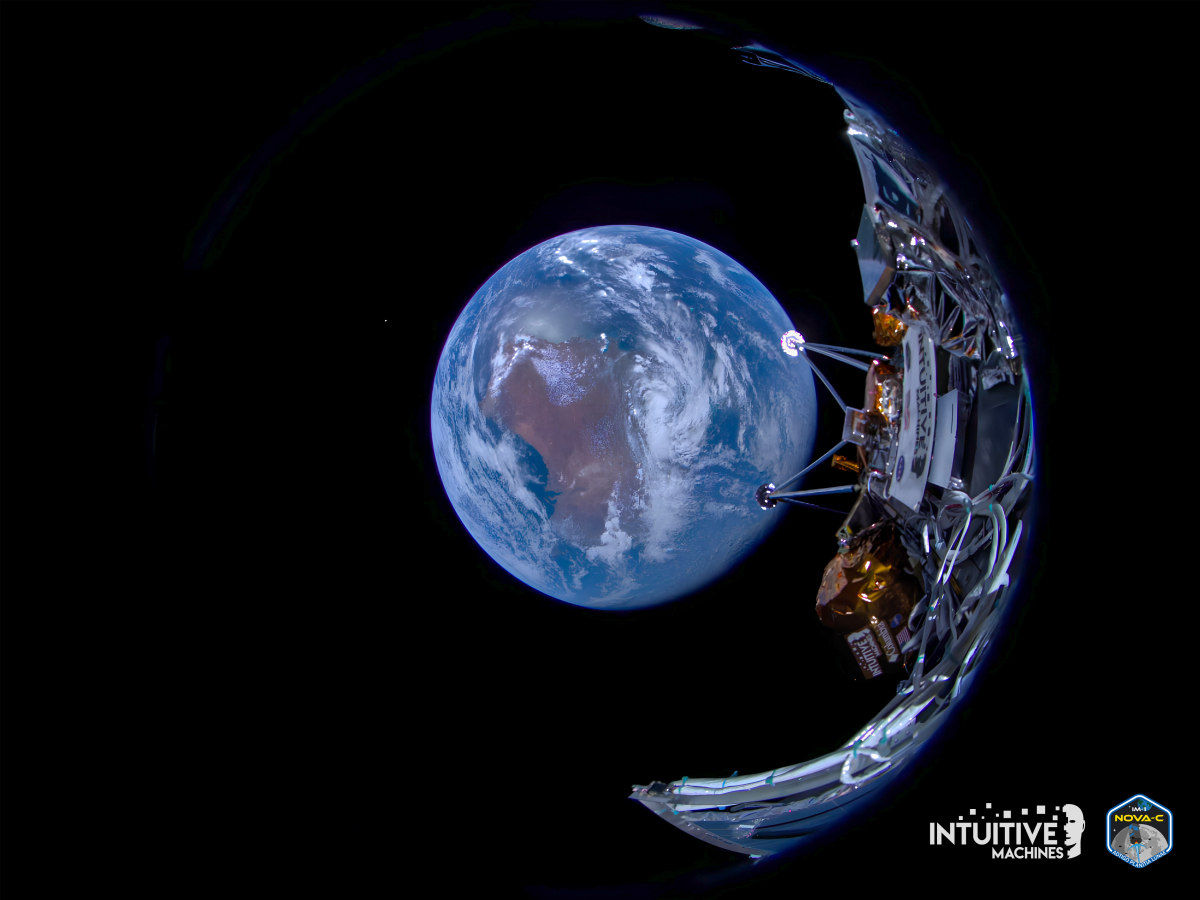
This is one of the first IM-1 mission images successfully transmitted to Earth. The photo was captured shortly after separation from the SpaceX's second stage while headed towards the Moon. Credit: Intuitive Machines
Related Stories:
John Christian Explores Far Reaches of Space Travel in Paper Nominated for Canopus Award
Christian shares the inspiration behind 'Navigation and Star Identification for an Interstellar Mission'.
AE’s Third Space Imaging Workshop Creates Hub for Imaging Experts
Top optical navigation and space imaging experts gathered at Georgia Tech’s Global Learning Center for the Third Space Imaging Workshop.


